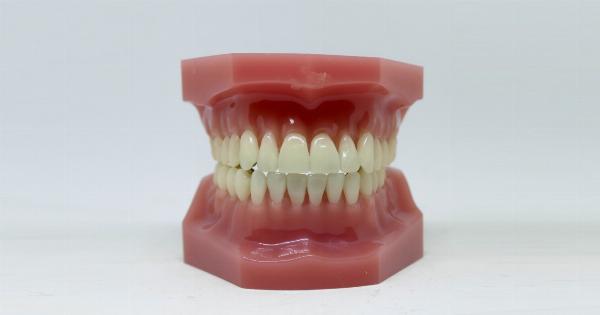Whitening toothpastes have been gaining popularity in recent years, with claims of being able to transform dull, stained teeth into a dazzling white smile.
But do these toothpastes really live up to their promises? Are they worth the investment, or are they just marketing gimmicks? In this article, we will explore the effectiveness of whitening toothpastes and delve into the science behind their claims.
Understanding Stained Teeth
Before we can discuss the effectiveness of whitening toothpastes, it is important to understand what causes teeth to become stained in the first place. There are two main types of tooth staining: extrinsic and intrinsic.
Extrinsic Stains
Extrinsic stains are surface stains that occur on the outer layer of the teeth, known as the enamel. These stains are usually caused by external factors such as food, beverages, and tobacco use. Common culprits include coffee, tea, red wine, and smoking.
Intrinsic Stains
Intrinsic stains, on the other hand, occur beneath the enamel, within the dentin layer of the teeth. These stains are usually caused by factors such as aging, trauma, or exposure to certain medications during tooth development.
How Do Whitening Toothpastes Work?
Whitening toothpastes work by utilizing various ingredients to remove surface stains from the enamel. These ingredients can include abrasive agents, detergents, and chemical agents.
Abrasive Agents
One common ingredient found in whitening toothpastes is abrasive agents, such as silica or baking soda. These abrasives work by physically scrubbing away surface stains, revealing the natural whiteness of the teeth.
However, while effective at removing extrinsic stains, they may also wear down the enamel if used excessively or with too much force.
Detergents
Whitening toothpastes also often contain detergents, such as sodium lauryl sulfate. These detergents help to create foam and facilitate the removal of stains by breaking them down and allowing them to be rinsed away more easily.
While detergents can be effective at removing extrinsic stains, they may not be as effective at treating intrinsic stains that lie beneath the enamel.
Chemical Agents
Some whitening toothpastes also utilize chemical agents, such as hydrogen peroxide or carbamide peroxide, to help whiten the teeth.
These agents work by penetrating the enamel and breaking down the chemical bonds of the stains, resulting in a whitening effect. Chemical agents can be effective at treating both extrinsic and intrinsic stains, making them a popular choice for individuals seeking significant whitening results.
Are Whitening Toothpastes Effective?
While whitening toothpastes can be effective at removing surface stains and restoring the natural whiteness of the teeth, their effectiveness in treating deeper intrinsic stains may be limited.
In fact, some studies have shown that the concentration of whitening agents in toothpastes may not be sufficient to effectively bleach the teeth.
Considerations for Choosing a Whitening Toothpaste
When choosing a whitening toothpaste, it is important to consider factors such as the severity of the stains, the sensitivity of your teeth, and your oral health needs.
It is also important to manage your expectations and understand that whitening toothpastes may not provide the same dramatic results as professional whitening treatments.
Alternatives to Whitening Toothpastes
If you are looking for more significant whitening results, there are other alternatives to consider.
Professional dental treatments, such as in-office bleaching or take-home whitening kits prescribed by a dentist, tend to be more effective at treating both extrinsic and intrinsic stains. However, these treatments can be more expensive and may also cause temporary tooth sensitivity.
Maintaining Whiter Teeth
Regardless of the whitening method you choose, it is important to practice good oral hygiene to maintain the results. Regular brushing and flossing, along with routine dental check-ups, can help keep your teeth looking their best.
In conclusion
Whitening toothpastes can be effective at removing surface stains and brightening your smile. However, their effectiveness in treating deeper intrinsic stains may be limited.
It is important to consider your individual needs and manage your expectations when choosing a whitening toothpaste. Remember, maintaining good oral hygiene practices is key to enjoying long-lasting results and a healthy smile.




























